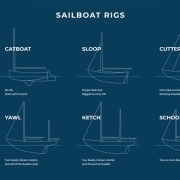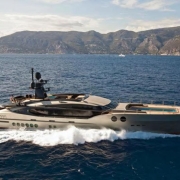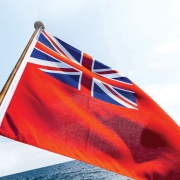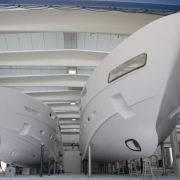Class Notations on Yachts – Classification Guide
9 December 2016
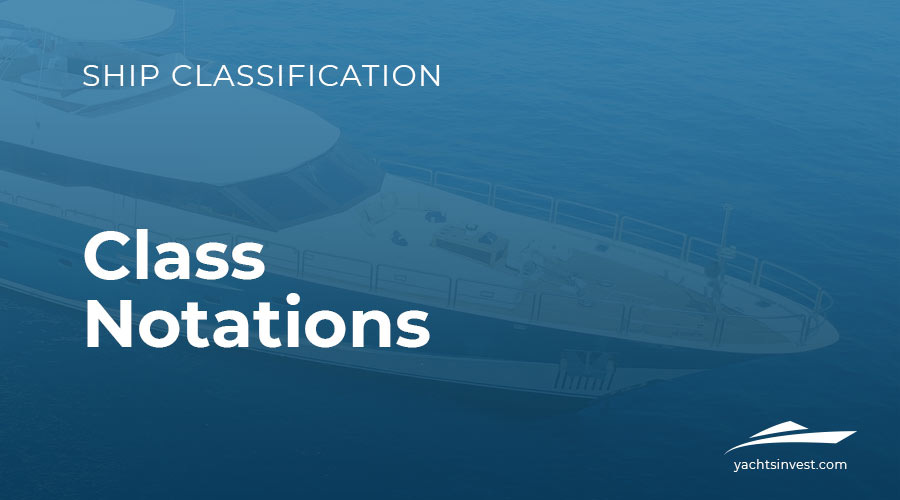
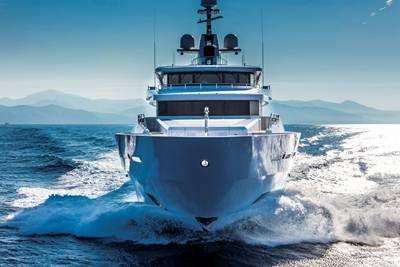


INTRODUCTION TO YACHTS CLASSES
Classification
Rules are developed to establish standards for the structural strength of the large yacht’s hull and its appendages, and the suitability of the propulsion and steering systems, power generation and those other features and auxiliary systems which have been built into the ship to assist in its operation, and even pollution protection systems. A yacht may be maintained in class provided that, in the opinion of the Society concerned, it remains in compliance with the relevant Rules, as ascertained by a periodic or non-periodic survey(s). Today a vessel either meets the relevant Class Society’s Rules or it does not. As a consequence, it is either “in” or “out” of “Class”.
In summary, Class Notations on Yachts will tell you a lot about the building quality and condition of each vessel and its components on an annual basis, according to the excellence of its construction and its adjudged continuing soundness. A yacht that has been designed and built to the appropriate Rules of a Society may apply for a Certificate of Class from that Society or for a periodical survey (generally required every 5 years) meant for the Renewal of Class Certificate. Class Societies have often developed two separate sets of Rules for Commercial and Private Yachts. They can be applied to New Construction as well as Existing Yachts.
Classification Societies
Classification Societies play a fundamental role in today’s marine industry. A Society will act on behalf of ship-owners and builders to ensure high build quality and the safety of a ship’s main structural parts. Classification also provides a point of reference with regard to those who were involved in the supply chain including builders, charterers and insurers.
As an independent, self-regulating, externally audited, body, a Classification Society has no commercial interests related to ship design, shipbuilding, ship ownership, ship operation, ship management, ship maintenance or repairs, insurance, or chartering.
The process begins with the design and construction phases, focussing on the implementation and manufacture of key components as well as technical specifications. The standards which must be adhered to are dictated by the regulations of the chosen society and are published as rules, evolving continuously to incorporate new technologies and client requests via the advice of highly competent engineers and architects.
All Classification Societies waive liability for future faults as a surveyor can only record a vessel’s quality at the time of inspection; it is then the responsibility of the yacht owner to maintain the vessel and inform the society in the event of damage or structural alteration. Although the surveys are thorough, they do not cover all aspects of a ship’s build and operating service. This can include crew qualifications, navigational aids and manoeuvrability.
Classification Societies are often simply referred to as “Class Societies” or just “Class”. There are currently 13 members of the International Association of Classification Societies (IACS), each with a unique set of rules, classification layouts and notations. Five of the biggest Classification Societies are listed below, along with their identifying signature, to denote a ship constructed under special survey in compliance with the Society’s rules, suitable for unrestricted sea-going service:
| SOCIETY | ABBREVIATION | SYMBOL |
| American Bureau of Shipping | ABS | ✠ A1 |
| Bureau Veritas | BV | I |
| Lloyd’s Register of Shipping | LR | ✠ 100A1 |
| Germanischer Lloyd | GL | ✠ 100 A5 |
| RINA | RI | 100-A-1.1 or C |
The marks following the Society’s standard signature are not interchangeable between organizations, meaning each letter or number will represent a different characteristic for each society. Each mark can be broken down to highlight a yacht’s capabilities, equipment or restrictions.
Each of the Classification Societies has developed a series of notations that may be granted to a vessel to indicate that it is in compliance with some additional voluntary criteria that may be either specific to that vessel type or that are in excess of the standard classification requirements.
The Classification of a yacht does not absolve the Interested Party from compliance with any requirements issued by Administrations and any other applicable international and national regulations for the safety of life at sea and protection of the marine environment such as SOLAS, ILLC, MARPOL,
ILO or IMO.
Smaller vessels are categorized differently, adhering to different requirements and statutory regulations. With a heavier focus on passenger numbers and distance of operation from shore, the Maritime and Coastguard Agency (MCA) outlines guidance for UK vessels (up to 24 meters in length) which are used for charter or commercial use.
As RINA is today the most reputed Classification Society in the Mediterranean and a leader in the yachting certification business, developing and offering services of ships classification, certification, verification of conformity, inspection, and testing, we will hereby provide you with a summary of their more common Class Notations on Yachts, this will be helpful to identify these most peculiar symbols:
CLASS NOTATIONS – RINA
Main Class Symbol
The main class symbol C is assigned to ships built in accordance with the requirements of the Rules or other rules recognized as equivalent and maintained in a condition considered satisfactory by the Society. The period of class (or interval between class renewal surveys) assigned to a ship is a maximum of 5 years.
Except for special cases, a class is assigned to a ship only when the hull, propulsion and auxiliary machinery installations, and equipment providing essential services have all been reviewed in relation to the requirements of RINA’s Rules.
With the 5 year class period is to be understood as being the highest class granted by the Society.
Construction Marks
The construction mark identifies the procedure under which the yacht and its main equipment or arrangements have been surveyed for the initial assignment of the Class.
Construction marks defined below are assigned separately to the hull of the yacht and its appendages, to the machinery installation.
The construction mark is placed before the symbol HULL for the hull, before the symbol MACH for the machinery installations, and before the additional Class Notation granted, when such a notation is eligible for a construction mark.
When the same construction mark is assigned to both hull and machinery, the construction mark is assigned globally to the ship without indication HULL and MACH after the main class symbol.
Hull Construction Mark (HULL)
- Construction mark ✠ is assigned to the hull when it has been surveyed by RINA during its construction in compliance with the new building procedure.
- Construction mark ✠ is assigned to the hull when it was built under the survey of another Society.
- Construction mark ● is assigned to the hull in all cases other than those listed above.
Machinery Construction Mark (MACH)
- The construction mark ✠ is assigned when the propelling and auxiliary machinery has been designed, constructed, certified, installed and tested in accordance with RINA Rules.
- The construction mark ✠ is assigned when the propelling and auxiliary machinery has been designed, constructed and certified in accordance with the rules of another society and installed and tested under the survey of RINA.
- Construction mark ● is assigned in all cases other than those listed above.
Navigation and Operating Notations
The navigation notation UNRESTRICTED NAVIGATION is assigned to a ship intended to operate in any area and any period of the year.
Restricted operating area notations are optional and will be marked accordingly like, for example, on a specified operating area or operation service within “x” miles from shore.
Additional Class Notations
An additional Class Notation expresses the classification of additional equipment or specific arrangement, which has been requested by the Interested Party. The assignment of such an additional Class Notation is subject to the compliance with additional rule requirements.
Some additional Class Notations, due to the importance of relevant equipment or arrangements, are assigned a construction mark. This is indicated in the definition of the relevant additional Class Notations. Class Notations which may be assigned to a ship are listed according to the category to which they
belong:
Automated Machinery Systems (AUT)
AUT notations are relevant to automated machinery systems installed onboard ships.
Automated machinery systems (AUT – UMS (Y))
The additional Class Notation AUT-UMS (Y) may be assigned to yachts that are fitted with automated installations enabling machinery spaces to remain periodically unattended in all sailing conditions including manoeuvring.
Integrated Ship Systems (SYS)
SYS notations are relevant to the operation of integrated systems regarding navigation, machinery, communication and specific cargo, as applicable.
Centralised Navigation Equipment (SYS-NEQ)
The additional Class Notation SYS-NEQ is assigned to yachts which are fitted with a centralized navigation control system so laid out and arranged that it enables normal navigation and manoeuvring operation of the ship by two persons in cooperation.
Centralised Navigation Equipment (SYS-NEQ-1)
The additional Class Notation SYS-NEQ-1 is assigned when, in addition to the above, the installation is so arranged that the navigation and manoeuvring of the yacht can be operated under normal conditions by one person, for a periodical one-man watch. This notation includes specific requirements for the prevention of accidents caused by the operator’s unfitness.
Integrated Bridge System (SYS-IBS)
The additional Class Notation SYS-IBS is assigned to yachts which are fitted with an integrated bridge system which allows simplified and centralized bridge operation of all main functions of navigation manoeuvring and communication, as well as monitoring from the bridge of other functions related to specific cargoes and pollution; for passenger ships, heating, ventilation and air conditioning are also included in the monitored functions
Communication System (SYS-COM)
The additional Class Notation SYS-COM is assigned to yachts which are fitted with a local area network including the alarm, monitoring and control systems and computers used for management operations and external communication devices for reporting ashore navigation, maintenance and operational information.
Damage Stability (DMS)
The additional Class Notation DMS may be assigned to yachts complying with the damage stability requirements.
STAR Notation
General STAR is a System of Trace and Analysis of Records integrating rational analysis with data and records from ship-in-service concerning planned inspection and ship maintenance.
STAR-HULL
The additional Class Notation STAR-HULL is assigned to ships on which an Inspection and Maintenance Plan (IMP) for the hull is implemented.
The notation may be completed by the suffix NB when a structural tridimensional analysis has been performed for the hull structures, at the new building stage. The suffix NB is removed when the ship enters the STAR-HULL survey program through the implementation of the Inspection and Maintenance Plan (IMP).
STAR-MACH
The additional Class Notation STAR-MACH is assigned to yachts on which an Inspection and Maintenance Plan (IMP) for the machinery is implemented. This plan is based on a risk analysis review of the installation.
STAR Notation (STAR)
When yachts are granted both STAR-HULL and STAR-MACH, the two separate notations are superseded by the cumulative additional Class Notation STAR.
Crew Accommodation and Recreational Facilities (MLCDESIGN)
According to the Maritime Labour Convention 2006 Notation:
The additional Class Notation MLCDESIGN is assigned to yachts having crew accommodation and recreational facilities complying with the Maritime Labour
Convention 2006 (MLC).
GREEN PLUS Notation (Eco-Friendly Yachts)
Issued in 2008 and updated yearly, the GREEN PLUS additional Class Notation has been revised in 2012 to cover new issues for seagoing ships and ships operated at a fixed location. The additional Class Notation GREEN PLUS is assigned to Eco-Friendly yachts compliant with the Society’s environmental protection framework of airborne gases, spillage/leakage of substances, oil, sewage, greywater, garbage disposal and noise mitigation systems to prevent pollution.
Safety Class Notation EFP (Bureau Veritas)
The following additional Class Notations are assigned to yachts complying with the requirements of this Section:
- EFP-A: for yachts having Enhanced Fire Safety Protection in accommodation spaces,
- EFP-M: for yachts having Enhanced Fire Safety Protection in machinery spaces,
- EFP-C: for yachts having Enhanced Fire Safety Protection in cargo areas,
- EFP-AMC: for yachts complying with all the requirements of this Section.
For more information on Class Notations on Yachts – Classification of Yachts, please feel free to contact Allied Yachting.


